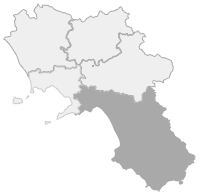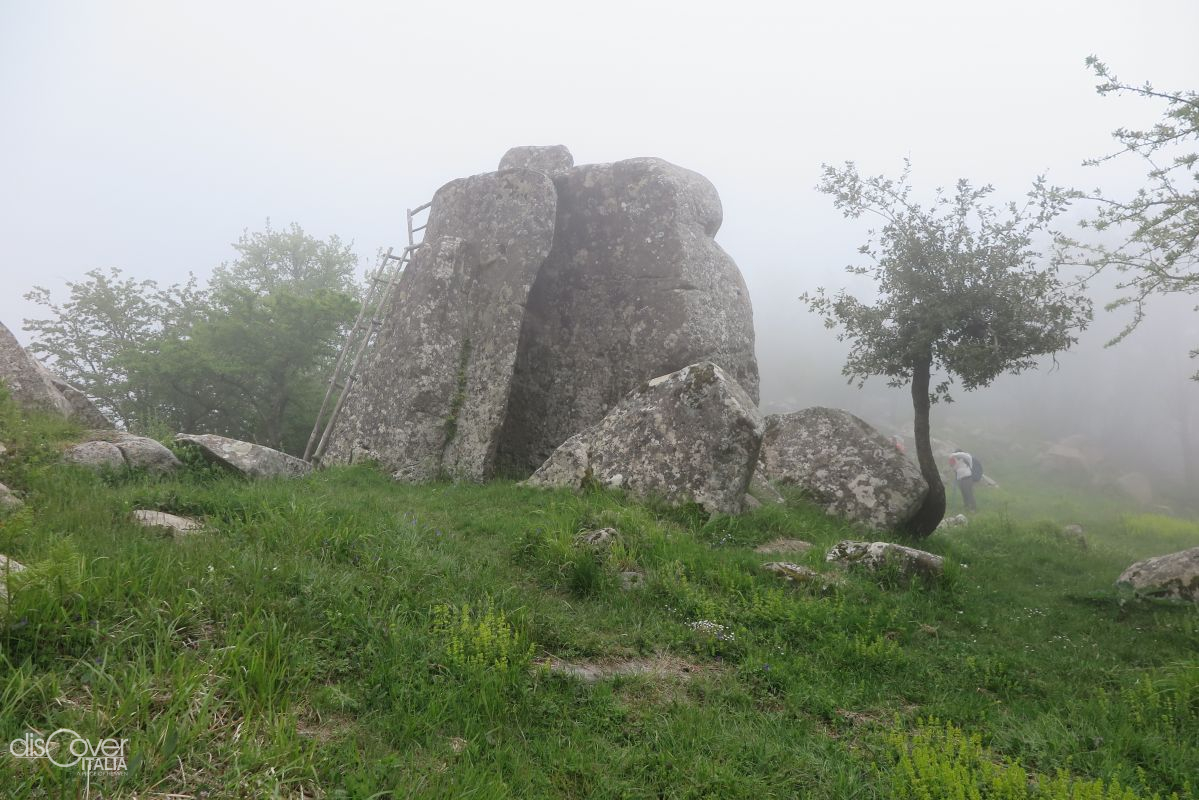It was along the climb to the shrine on the top the mountain that young women, at the right age to become mothers, strayed from the path usually followed by pilgrims.
Thus, Petra 'ru Mulacchio, “Stone the illegitimate son” in local dialect, kept faith in the collective imagination to its ancestral fame, linked to cults and practices dating back to prehistoric times. And somehow remained current until 1950.
After that, for a few decades, that ancient tradition fell into disuse as was the attendance at the stone, of which memory was almost being lost. Until, in 1985, that place had been recognized in its particularity and value by Professor Amedeo La Greca, who had made Monte della Stella’s extraordinary archaeological site known far beyond the area of existence, one of the rare megalithic monuments present in Italy.
Petra is divided into three blocks, separated by a natural phenomenon, which has opened two very narrow galleries between them. The work of the elements was then joined by that of man, who inserted large stones between the seven-meter-high boulders, while others raised them horizontally above, forming a kind of roof. In those upper stones, where rainwater is collected, channels have been dug to let it drain. The only modern addition is a wooden staircase placed a few years ago by the Park Authority. The rest of the monument dates back to the second half of the third millennium BC. or, according to others, to the beginning of the second millennium, when a population of proto-Apennine culture was established in that territory, groups of shepherds, who followed the rhythm of the seasons for transhumance and practiced fertility rites linked to the position of the sun.
None of the boulders that make up the Petra are in a random position. All together they form a structure calibrated on sun’s position, able to accurately indicate the winter and summer solstice. Through the stones, the sun's rays penetrate the tunnels at sunset to form a blade of light, the sun blade, an astronomical phenomenon common to prehistoric megalithic structures such as Stonehenge, which can be considered stone calendars. The position and length of the blade of light change every day, constantly throughout the year: the maximum length occurs on the winter solstice, the minimum on the summer solstice. An event so precise that it could never be the result of natural movements of the stones. For this reason, the site of Monte della Stella has been equated to the Stonehenge.





Comments powered by CComment